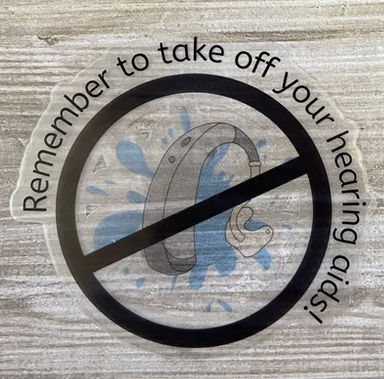Ver pagina en: English | Español
Hearing is complex, requiring a series of actions and reactions to work. The process involves many parts of the ear working together to convert sound waves into information the brain understands and interprets.
Sound waves enter the ear canal and travel toward our eardrums.
The sound waves cause the eardrum and bones in the middle ear to vibrate.
Tiny hair cells inside the cochlea, the sensory organ of the ear, convert these vibrations into electric impulses that are picked up by the auditory nerve.
At birth, each typical ear has about 12,000 sensory cells, called hair cells, which sit on a membrane that vibrates in response to incoming sound. Each frequency of a complex sound maximally vibrates the membrane at one location. Because of this mechanism, we hear different pitches within the sound. A louder sound increases the amplitude of the vibration, so we hear loudness.
Signals sent to the brain from auditory nerve are then interpreted as sounds.
Once the hair cells in the inner ear are damaged, permanent sensorineural hearing loss occurs.
Currently, sensorineural hearing loss cannot be restored in humans, but HHF’s researchers are working to better understand the mechanisms of hearing loss to find better treatments and cures.
More Resources
The next step in this field is the use of powerful modern sequencing technology in order to map gene activity and gene regulation during hair cell regeneration in fish and birds as well as in mammalian balance organs.
We found that the aging brain tries to amplify degraded input from the auditory nerve and that amplified responses are associated with poorer brain structure and trouble with speech understanding.
On the eve of this biggest day for charitable giving, you’ve more than likely already heard from many nonprofit organizations. Here’s what makes Hearing Health Foundation stand out.
With Thanksgiving here, we’re feeling especially grateful. Thank you, truly, for being part of our Hearing Health Foundation community, some of whom I was fortunate enough to meet over the summer and fall.
During holiday family gatherings, the signs of hearing loss can become especially apparent.
While working in the clinic I realized how much I loved creating resources for patients—brochures, handouts, visual guides—mostly because I couldn’t find what I wanted online.
Digital hearing tools can act as allies to reduce isolation. Technology has adapted to today’s needs and can help people struggling with hearing loss regain and retain their social connections.
On this Veterans Day and every day, Hearing Health Foundation (HHF) thanks our U.S. service members and veterans for their sacrifices. This group is disproportionately at risk for hearing damage, but earlier this year changes to how tinnitus is rated as a compensable disability were proposed.
Our partner Hyperacusis Research recently hosted a webinar that highlighted both the human impact of hyperacusis—pain triggered by everyday sounds—and the scientific progress being made to understand and treat it.













A practical reference, not a lecture, from a music industry professional on how to protect our first instrument: our hearing.